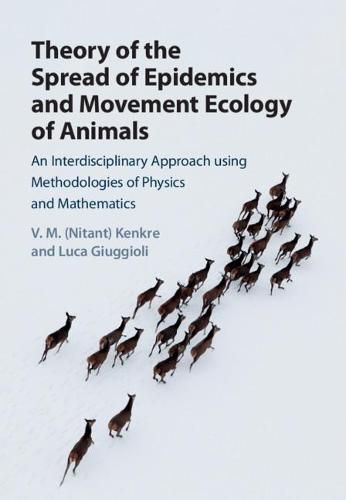Readings Newsletter
Become a Readings Member to make your shopping experience even easier.
Sign in or sign up for free!
You’re not far away from qualifying for FREE standard shipping within Australia
You’ve qualified for FREE standard shipping within Australia
The cart is loading…






Exploiting powerful techniques from physics and mathematics, this book studies animal movement in ecology, with a focus on epidemic spread. Pulmonary syndrome is not only feared in epidemics of recent times, such as COVID-19, but is also characteristic of epidemics studied earlier such as Hantavirus. The Hantavirus is one of the book’s central topics. Correlations between epidemic outbreaks and precipitation events like El Nino are analyzed and spatial reservoirs of infection in off-period of the epidemic, known as refugia, are studied. Predicted traveling waves of infection are successfully compared to field observations. Territoriality in scent-marking animals is presented, with parallels drawn with the theory of melting. The flocking and herding of birds and mammals are described in terms of collective excitations. For scientists interested in movement ecology and epidemic spread, this book provides effective solutions to long-standing problems.
$9.00 standard shipping within Australia
FREE standard shipping within Australia for orders over $100.00
Express & International shipping calculated at checkout
Exploiting powerful techniques from physics and mathematics, this book studies animal movement in ecology, with a focus on epidemic spread. Pulmonary syndrome is not only feared in epidemics of recent times, such as COVID-19, but is also characteristic of epidemics studied earlier such as Hantavirus. The Hantavirus is one of the book’s central topics. Correlations between epidemic outbreaks and precipitation events like El Nino are analyzed and spatial reservoirs of infection in off-period of the epidemic, known as refugia, are studied. Predicted traveling waves of infection are successfully compared to field observations. Territoriality in scent-marking animals is presented, with parallels drawn with the theory of melting. The flocking and herding of birds and mammals are described in terms of collective excitations. For scientists interested in movement ecology and epidemic spread, this book provides effective solutions to long-standing problems.